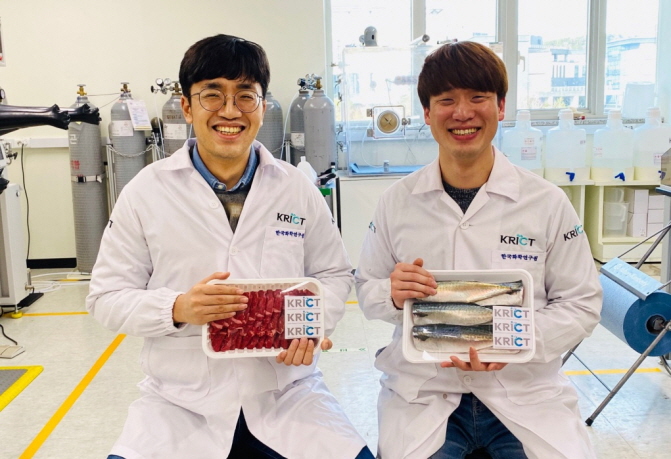SEOUL, April 8 (Korea Bizwire) — South Korean researchers has developed stickers that could inform consumers whether refrigerated food products such as fish, meat and fruits are likely to spoil or not.
The Korea Research Institute of Chemical Technology (KRICT) said Tuesday it has developed a technology that can check whether food products have deteriorated with images that appear on stickers when exposed to room temperatures above 10 degrees Celsius.
At the heart of the technology is a nanofiber film that becomes transparent when exposed to room temperature.
Nanofiber films, with thin threads of nanometers that intersect, are opaque because they scatter light at low temperatures.
However, if exposed to room temperature for a certain period of time, the nanofiber structure collapses and becomes transparent.
Thus, the images of the ordinary film attached together can display the status, confirming the history of exposure to room temperature.
“Even if the image of sticker, which has changed due to exposure to room temperature, is refrigerated again, it cannot be returned to its original state,” said KRICT researcher Dr. Oh Dong-yeop, adding, “As the new delivery market is growing rapidly, demand for this technology will grow.”
The research team also adjusted the time when nanofiber films become transparent.
Depending on how thick the nanofiber stickers are manufactured, they will become transparent after 30 minutes or 24 hours of exposure to room temperature.
From dairy products that go bad quickly to vegetables, which can remain at room temperature for long periods, the stickers can be applied in a variety of ways by food type.
Manufacturing costs are also cheaper at around 10 won (US$0.01) per unit, thus they can be widely used in the low-temperature distribution sector of medicine.
The study was published in last month’s issue of Advanced Materials, an international academic journal.
D. M. Park (dmpark@koreabizwire.com)







